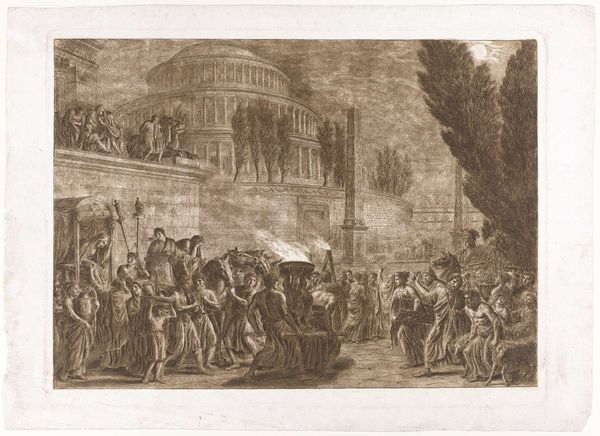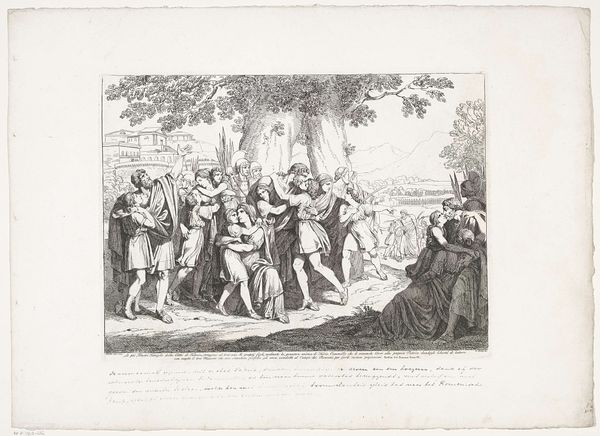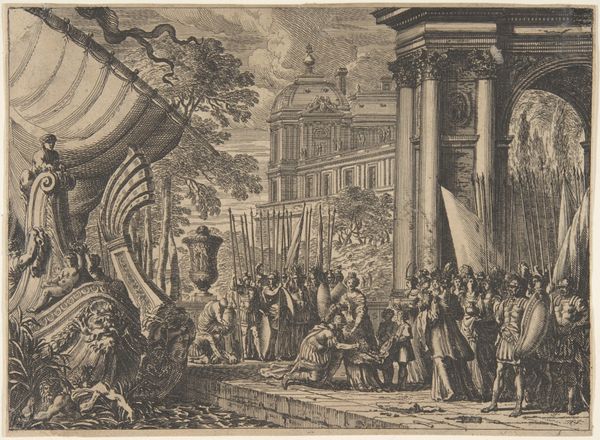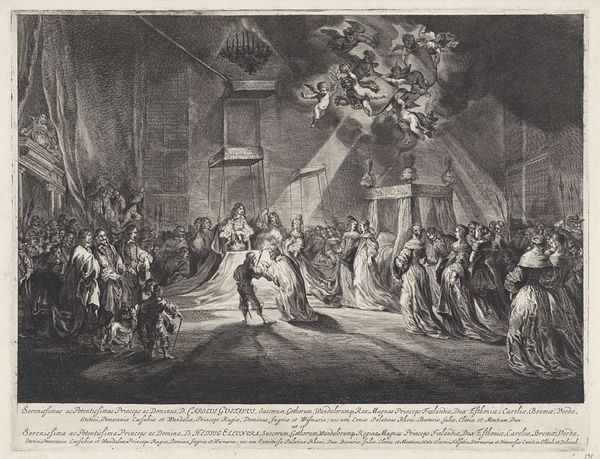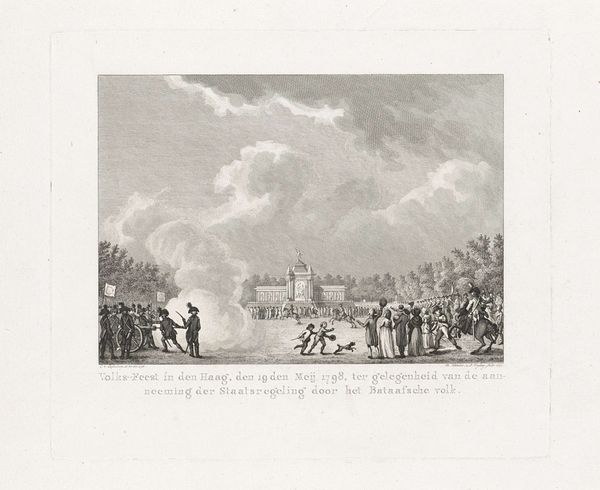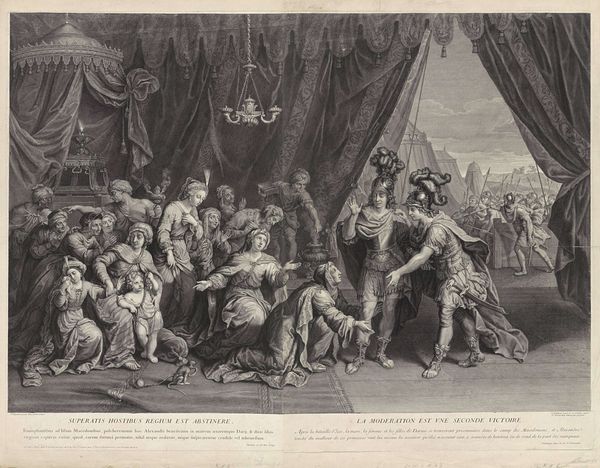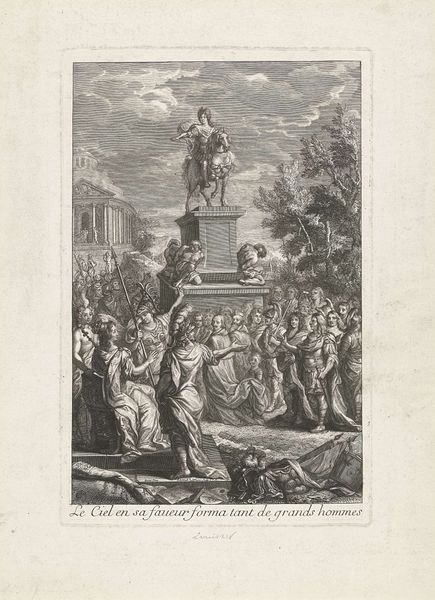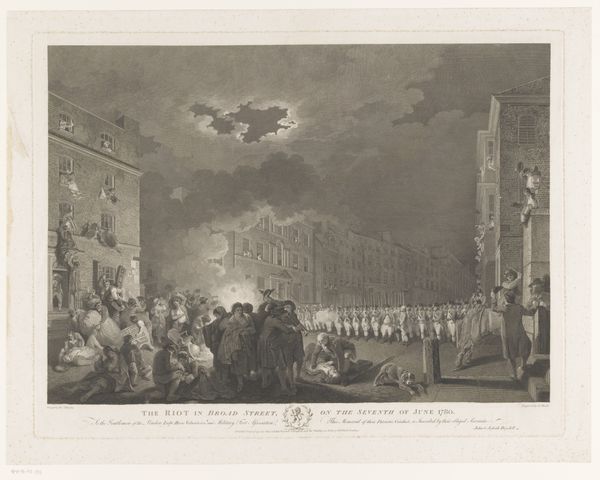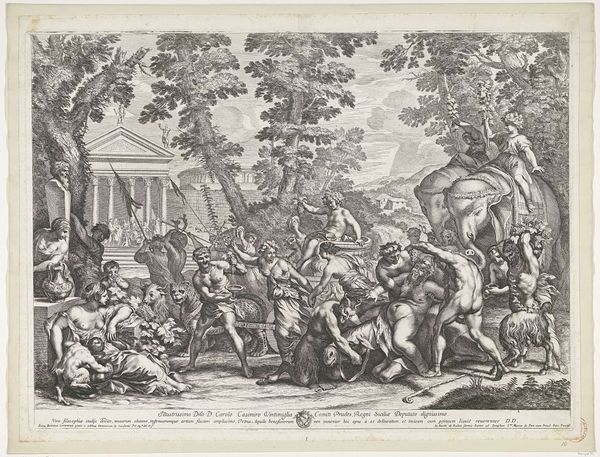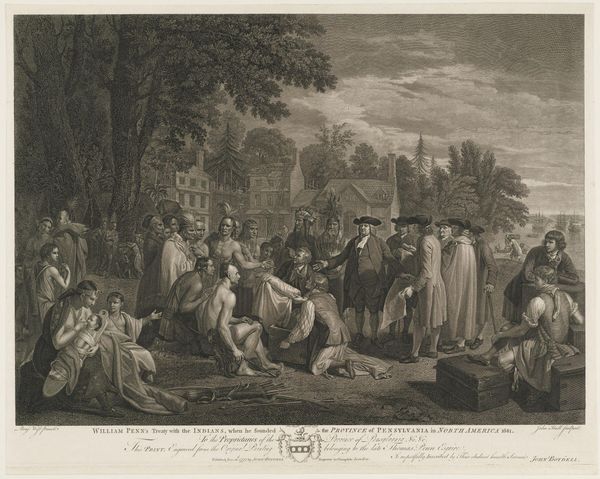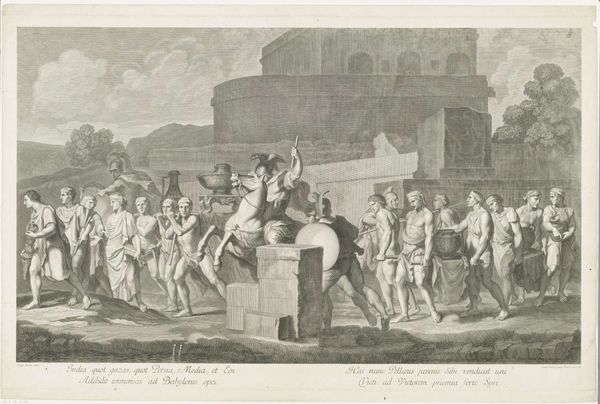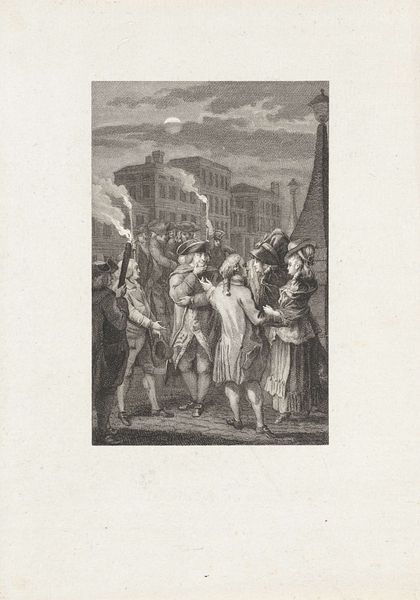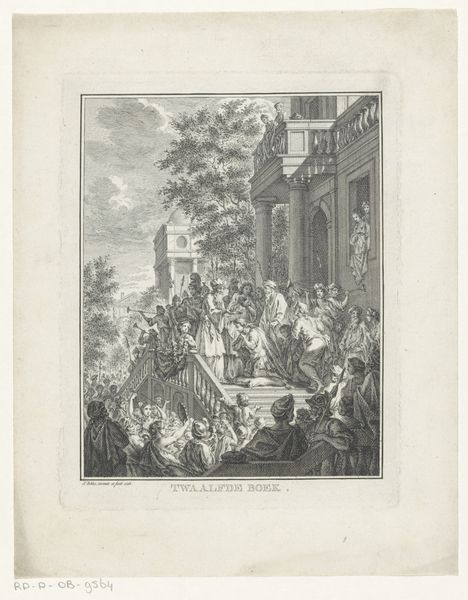
Dimensions: height 425 mm, width 496 mm
Copyright: Rijks Museum: Open Domain
Editor: Here we have an etching titled "Sovereign Council of Brabant in Brussels, 1787." The composition has a rather theatrical feel. There’s this grand building in the background, a crowd of figures, and it almost feels like a stage. How do you interpret this work? Curator: That theatricality you notice is key. Beyond the architectural portrayal, it signifies a staged unveiling, a critical moment etched in time. Etchings are more than historical documentation, they act as cultural mirrors reflecting contemporary sentiments and ideological stances. What stands out to you symbolically? Editor: Well, the people seem very active, celebrating maybe? But I can't tell exactly what's going on, what does their interaction with the building convey? Curator: Exactly! Consider that. Buildings often represented stability and power. But here, the figures reclaim this public space and engage in active dialogue. Does that alter your initial assumption of celebration, and towards what cultural event could this symbolism shift your understanding? Editor: It makes me wonder if this portrays an act of defiance. So, the building may stand as a symbol of authority but then becomes the place of liberation and change by that depiction? Curator: Precisely! See the nuances within the layers; from documentation to declaration to active, evolving symbols. It makes us ponder on permanence versus active narrative as to how memories are created and cemented in history. Editor: I never thought of it quite that way, recognizing that the figures challenge, redefine, and change architectural symbolism helps the image feel less like a static representation, and more like an open-ended historical narrative. Curator: It’s a testament to the transformative power of symbols and imagery that carry so much cultural weight across time. What this says is perhaps, in order for any historical narrative to be preserved, its interpretation and importance depends heavily on an involved population.
Comments
No comments
Be the first to comment and join the conversation on the ultimate creative platform.
